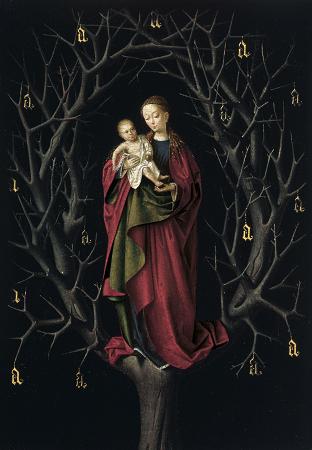Thyssen-Bornemisza Museum. The Thyssen-Bornemisza National Museum, or simply the Thyssen, is an art museum in Madrid, Spain, located near the Prado Museum on one of city's main boulevards. It is known as part of the Golden Triangle of Art, which also includes the Prado and the Reina Sofia national galleries. The Thyssen-Bornemisza fills the historical gaps in its counterparts' collections: in the Prado's case this includes Italian primitives and works from the English, Dutch and German schools, while in the case of the Reina Sofia it concerns Impressionists, Expressionists, and European and American paintings from the 20th century. With over 1,600 paintings, it was once the second largest private collection in the world after the British Royal Collection. A competition was held to house the core of the collection in 1987-88 after Baron Thyssen, having tried to enlarge his Museum in Lugano, searched for a location elsewhere in Europe. The collection was started in the 1920s as a private collection by Heinrich, Baron Thyssen-Bornemisza de Kaszon. In a reversal of the movement of European paintings to the US during this period, one of the elder Baron's sources was the collections of American millionaires coping with the Great Depression and inheritance taxes. In this way he acquired old master paintings such as Ghirlandaio's portrait of Giovanna Tornabuoni and Carpaccio's Knight. The collection was later expanded by Heinrich's son Baron Hans Heinrich Thyssen-Bornemisza, who assembled most of the works from his relatives' collections and proceeded to acquire large numbers of new works. The collection was initially housed in the family estate in Lugano in a twenty-room building modelled after the Neue Pinakothek in Munich. In 1988, the Baron filed a request for building a further extension designed by British architects James Stirling and Michael Wilford, but the plan was rejected by the Lugano City Council. In 1985, the Baron married Carmen Tita Cervera and introduced her to art collecting. Cervera's influence was decisive in persuading the Baron to relocate the core of his collection to Spain where the local government had a building available next to the Prado. The Thyssen-Bornemisza Museum officially opened in 1992, showing 715 works of art. A year later, the Spanish Government bought 775 works for $350 million. These pieces are now in the purpose-built museum in Madrid. After the museum opened, in 1999, Cervera loaned 429 works of her own art collection to the museum for 11 years. The loan has been renewed annually since 2012. The Baroness remains involved with the museum. She personally decided the salmon pink tone of the interior walls and in May 2006, publicly demonstrated against plans of the Mayor of Madrid, Alberto Ruiz-Gallarden to redevelop the Paseo del Prado as she thought the works and traffic would damage the collection and the museum's appearance. The Old Masters were mainly bought by the elder Baron, while Hans focused more on the 19th and 20th century, resulting in a collection that spans eight centuries of European painting, without claiming to give an all-encompassing view but rather a series of highlights. One of the focal points is the early European painting, with a major collection of trecento and quattrocento Italian paintings by Duccio, Bernardo Daddi, Paolo Uccello, and his contemporaries, and works of the early Flemish and Dutch painters like Jan van Eyck, Petrus Christus, Rogier van der Weyden, Gerard David and Hans Memling. Other highlights include works by leading Renaissance, Baroque and Rococo painters, including Antonello da Messina, Fra Bartolomeo, Giulio Romano, Giovanni Bellini, Titian, Tintoretto, Veronese, Jacopo Bassano, Sebastiano del Piombo, Bernardino Luini, Agnolo Bronzino, Domenico Beccafumi, Albrecht Durer, Hans Baldung Grien, Lucas Cranach the Elder, Hans Holbein, Caravaggio, Guercino, Sebastiano Ricci, Rubens, Van Dyck, Murillo, Rembrandt, Frans Hals, Canaletto, Francesco Guardi, Tiepolo, Giambattista Pittoni, Watteau, Francois Boucher, Chardin, Fragonard, Gainsborough and Pompeo Batoni, as well as two famous portraits by Domenico Ghirlandaio and Vittore Carpaccio. The Museum houses a display of North American paintings from 18th and 19th centuries, including Copley, Winslow Homer, John Singer Sargent. The display of the European 19th century starts with works by Francisco Goya, Thomas Lawrence, Delacroix, Gericault, Corot and Courbet. There are Impressionist and Post-Impressionist works by the artists Claude Monet, Auguste Renoir, Edgar Degas, Camille Pissarro, Alfred Sisley, Pierre Bonnard, Toulouse-Lautrec, Paul Gauguin, Cezanne, and Vincent van Gogh.
more...














